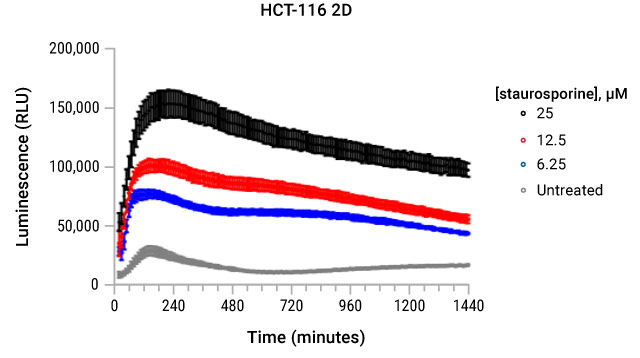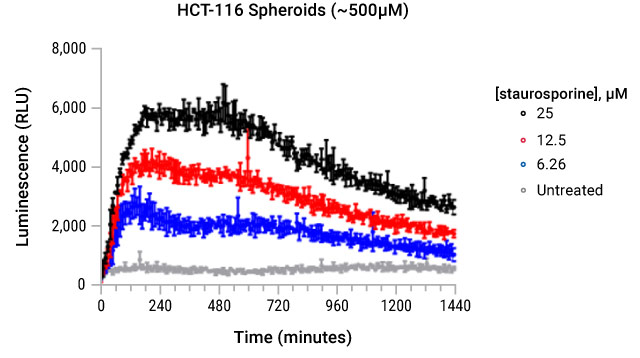인류의 건강과 생명공학 발전을 위해 봉사하는 기업 드림셀
We Serving the Health and Biotechnology of Humanity
We Serving the Health and Biotechnology of Humanity

제품코드 : GA5010
제품정보 : Inflammation Assay
The RealTime-Glo™ Extracellular ATP Assay is a bioluminescent assay designed for kinetic monitoring of ATP released from dying, stressed or activated cells. Extracellular ATP can function as a damage associated molecular pattern (DAMP) and is a key biomarker for determining whether a treatment induces immunogenic cell death, a specialized form of cell death that results in an immune response.
The RealTime-Glo™ Extracellular ATP Assay allows you to continually monitor extracellular ATP so you won’t miss crucial time points. It is compatible for use in 384-well plates, making it ideal for high-throughput screening applications.
Set up one plate to collect all the time points you need! First, reconstitute the reagent with cell culture medium and add to cells at the time of treatment. Then, read the luminescent signal continuously for 24 hours or longer using a standard plate-reading luminometer. No supernatant sampling required.

U937 cells were treated with a dilution of mitoxantrone, an anthracycline shown to induce immunogenic cell death (ICD). RealTime-Glo™ Extracellular ATP Assay Reagent was added, and the assay plate was placed in a plate reader set at 37°C. Luminescence was collected every 10 minutes for 24 hours.


HCT-116 cells were grown in monolayer (left) and in spheroids using ultra-low attachment plates (right). Cells were treated with dilutions of staurosporine, and the RealTime-Glo™ Extracellular ATP Assay Reagent was added. The timing for ATP release differs between monolayer and spheroid cell culture, and the reagent is compatible with both cell culture models.
The Lumit™ HMGB1 Immunoassay detects HMGB1 directly in cell culture samples in 90 minutes or less and streamlines your DAMP and immunogenic cell death research. Use this assay to complement the RealTime-Glo™ Extracellular ATP Assay for a more complete picture of immunogenic cell death.